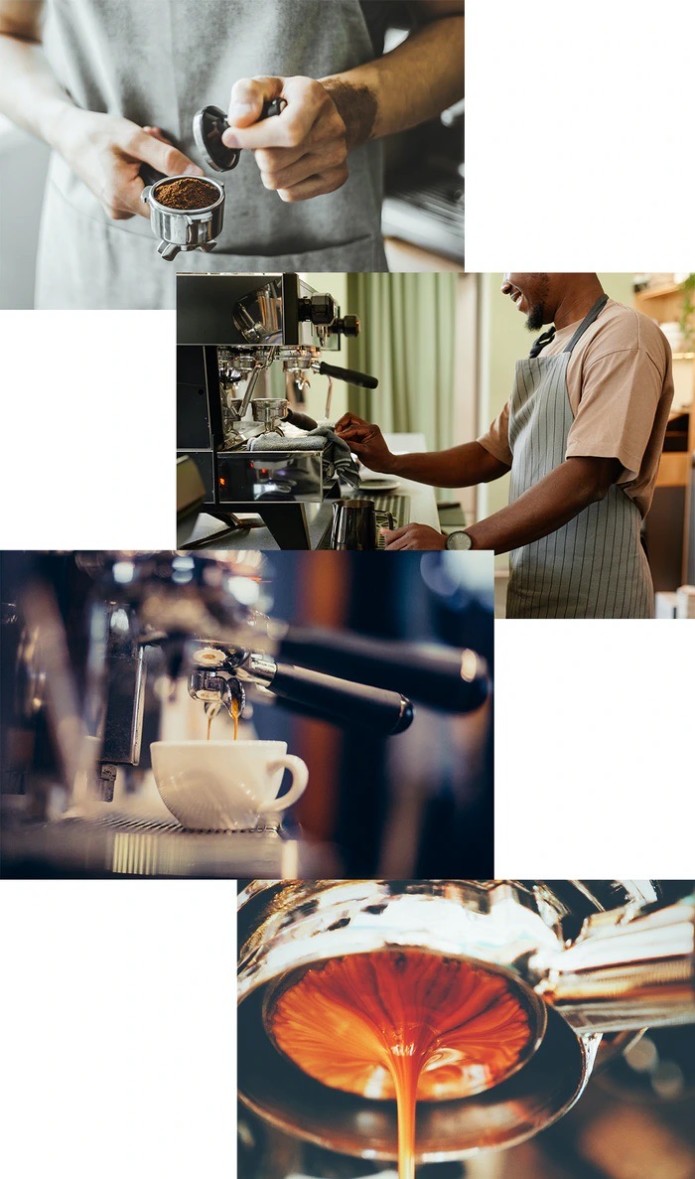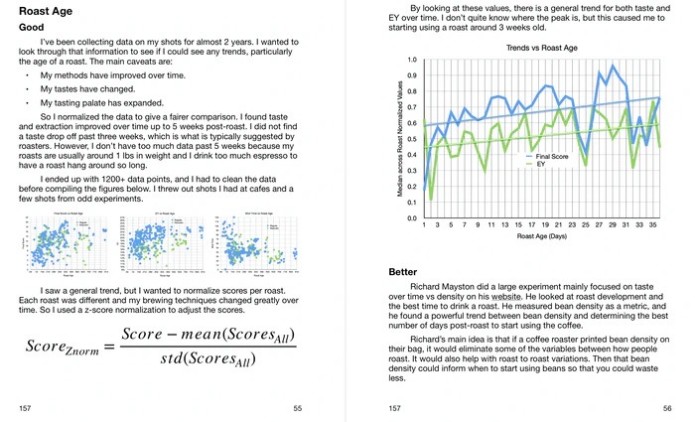
A book to help you make the best espresso using coffee data science.

Espresso is the most unforgiving form of coffee with multiple variables that complicate the process. Information is available on the internet which allows someone new to espresso to learn how to get a decent shot. However, to go from good to the best is more ambiguous.

People think you have to upgrade coffee equipment for better espresso. Better equipment will improve your espresso, but it isn’t the only thing. There are plenty of cheaper ways and methods to improve espresso that can be done incrementally. I wrote a book about improving espresso by incrementally improving each variable of the process using data science with the aim to help every espresso drinker regardless of their home or professional setup.

This book was extracted from over 1,200 pages of writings on espresso and coffee from data and experiments over the past three years. I want to publish this book with a professional design and style as well as professional editing. To do this, I found a designer, editor, and printer through another coffee person; their previous work is beautiful and a great user experience.

This book will focus on four large areas of espresso, and for each one, I use data to help give a deeper understanding of how to optimize parameters to produce better espresso.
This book pulls from nearly 200 articles written in the last three years on coffee through this lens of data. This allowed me to drastically improve my espresso shot, and it opened the door for the possibility that there is still more to be discovered in espresso.

My goal is to remove ambiguity and answer the question ”How do I make a better shot?” This 180 page book breaks down multiple variables and discusses good, better, best techniques.

In 2006, I got a bachelor and masters in Electrical Engineering at Detroit Mercy, and then I went to the University of Notre Dame for my Ph.D. in Computer Science and Engineering. My dissertation was on 3D face recognition where I built a novel 3D face scanner by combining structured light with object tracking. I then worked extensively on recognition techniques using classical pattern recognition techniques.
Then, I worked at a startup doing 3D face recognition research for four years before ending up at Apple. At Apple, I worked on wrist detection and background heart rate for the first Apple Watch, and then I worked on Face ID, AR Kit, and People Detection for blind users. Aside from coffee, most of my time is spent with my family, and I have a few hobbies like studying Italian, reading, gardening, building legos, running, snowboarding, and Disney.



The top image shots the bottom of a spent espresso puck represented as Hue, Saturation, and Intensity. This shows some bright spots in red which would be darker brown in Red, Green, and Blue. These spots indicate where water flow was slower.
The bottom image shows two filter baskets with their holes colored by their size. I used image processing techniques to measure each hole size so that I could see how if the pattern of smaller or large holes affected water flow.

Q-score analysis using CQI Database:
I examined scoring metrics using in Q-grading coffee using correlation to understand how well each metric compared to one another as well as how they influenced the total score. This analysis revealed that three metrics in Q-grading (Uniformity, Clean Cup, and Sweetness) provide little discriminating information.
Correlation between SCA Q-Grading Metrics

 Grind distribution analysis using image processing
Grind distribution analysis using image processing
I used particle distributions to better understand humidifying coffee for faster degassing and better taste. I regularly use particle distributions from an imaging technique to understand how different methods affect the grind distribution. In this case, humidifying roasted coffee caused the coffee to grind coarser, and I compensated by going to a finer setting on the grinder.

Here is the design and development of the staccato shot. Fundamentally, this shot improves extraction and evenness of extraction because the layers are sifted. It is an advancement that levels the playing field of grinders and has brought me a better understanding of how coffee extracts.


I examined coffee extraction in salami shots (multiple cups), and I found at least for staccato shots, most extraction occurs at the beginning of the shot.
Salami Shot of Staccato Shot


I compared the Rok grinder to the Niche Zero using data where I found the Rok outperformed the Niche over multiple roasts in both taste and extraction.
Grinder Comparison

I analyzed tiger stripes in espresso using image processing to examine the variation by frame. Tiger stripes don’t correlate well to shot performance, and I see them as a sign of channeling because they are streams of faster moving, blonded coffee.
Tiger stripe analysis using visual notes as well as frame by frame statistics

Simple Temperature Experiment for Extraction Yield (EY) and Total Dissolved Solids (TDS)
I also looked at simple experiments on how variables like water temperature affect extraction:


The general layout of each chapter is to talk about a variable in terms of good, better, and best, so you can see how to improve that variable for your own setup. Obviously, this chapter, like the other ones still needs graphic design and editing.



I want a great design and presentation for my book, but I don’t want to under-estimate the market. By doing a Kickstarter, I can both get the funding and gauge the market to see if I can at least breakeven on publishing a book both as a hardback and an electronic book.
Supporting this book is a pre-order. The material has gone through a few drafts already, and I have already completed a first draft of the whole book. To get to a published book will required a graphic design, editing, and printing.
Additional Benefit
Kruve generously gave a 20% discount off of sifters for any of my original campaign backers, and they have extended that offer to anyone on Indiegogo.
This discount is available for 2022


Shipping Outside the USA
The backer assumes the responsibility of the VAT for their country. For books, this is typically 5% as compared to ~20% for other items.




